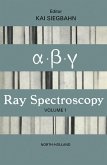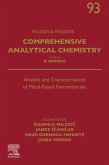Radioactivity in the Environment, Second Edition, presents the facts on the presence of both natural and manmade radionuclides in the environment. Sources of ionizing radiation that can lead to human exposure are discussed, including natural sources, nuclear explosions, nuclear power generation, the use of radiation in medical, industrial and research purposes, and radiation-emitting consumer products. In this thoroughly updated edition, users will find new sections on developments in radioactive nuclides in nature and technologically modified exposure to natural radiation, new threats by terrorist individuals, groups and countries, changes to the status of nuclear power in the world, and more.
Additional new sections cover radioisotopes in geo-prospecting and the oil industry, the use of radiation in environmental protection, detector types and detectors used for personal dosimetry, the "Dirty Bomb", the Fukushima accident, and North Korea testing sites and nuclear capabilities.
Additional new sections cover radioisotopes in geo-prospecting and the oil industry, the use of radiation in environmental protection, detector types and detectors used for personal dosimetry, the "Dirty Bomb", the Fukushima accident, and North Korea testing sites and nuclear capabilities.
- Includes details of analytical laboratory procedures for radioactivity measurement in different samples
- Features a new chapter on decontamination after radiation exposure
- Expands the discussion on nuclear fusion to cover ITER and other installations
Dieser Download kann aus rechtlichen Gründen nur mit Rechnungsadresse in A, B, BG, CY, CZ, D, DK, EW, E, FIN, F, GR, HR, H, IRL, I, LT, L, LR, M, NL, PL, P, R, S, SLO, SK ausgeliefert werden.









